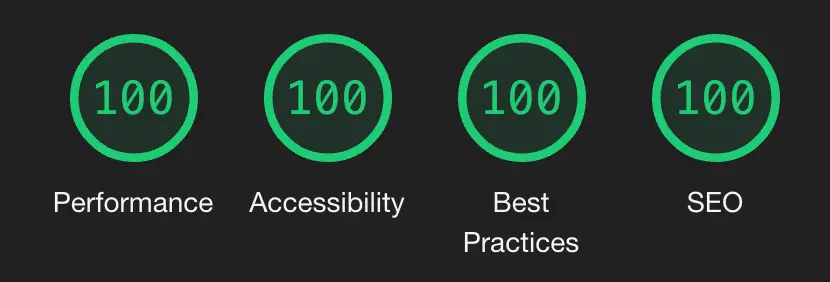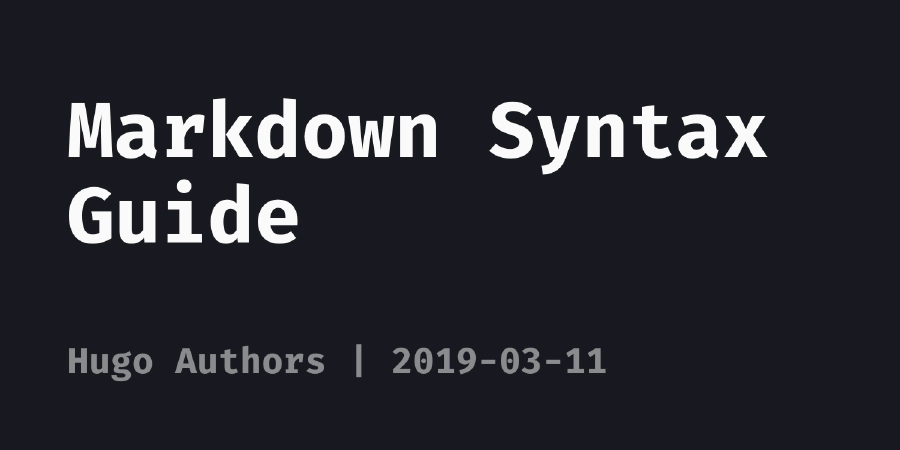🐻 A lightweight Hugo theme based on Bear Blog and Hugo Bear Blog.
Bear Cub takes care of speed and optimization, so you can focus on writing good content. It is free, multilingual, optimized for search engines, no-nonsense, responsive, light, and fast. Really fast.
Follow Hugo's quick start to create an empty website and then clone Bear Cub into the themes directory as a Git submodule:
git submodule add https://github.com/clente/hugo-bearcub themes/hugo-bearcubTo finish off, append a line to the site configuration file:
echo 'theme = "hugo-bearcub"' >> hugo.tomlLike Bear Blog, this theme:
- Is free and open source
- Looks great on any device
- Makes tiny (~5kb), optimized, and awesome pages
- Has no trackers, ads, or scripts
- Automatically generates an RSS feed
But that's not all! Bear Cub is also...
Bear Cub has a few accessibility upgrades when compared to its predecessors. The color palette has been overhauled to make sure everything is readable for users with low vision impairments or color deficiencies, and some interactive elements were made bigger to facilitate clicking for users with a motor impairment.
These small changes mean that Bear Cub passes Google's PageSpeed test with flying colors.
Bear Cub's demo is hosted on GitHub and therefore I'm not in control of its Content Security Policy. However, the theme itself was made with security in mind: there are no inline styles and it uses no JavaScript at all.
If you want to improve your Mozilla
Observatory score even further, you should be
able to simply add a few headers to your hosting service's configuration (e.g.
Netlify or Cloudflare
Pages) and never
have to think about it again. My _headers file, for example, looks like this:
/*
X-Content-Type-Options: nosniff
Strict-Transport-Security: "max-age=31536000; includeSubDomains; preload" env=HTTPS
Cache-Control: max-age=31536000, public
X-Frame-Options: deny
Referrer-Policy: no-referrer
Feature-Policy: microphone 'none'; payment 'none'; geolocation 'none'; midi 'none'; sync-xhr 'none'; camera 'none'; magnetometer 'none'; gyroscope 'none'
Content-Security-Policy: default-src 'none'; manifest-src 'self'; font-src 'self'; img-src 'self'; style-src 'self'; form-action 'none'; frame-ancestors 'none'; base-uri 'none'
X-XSS-Protection: 1; mode=block
If you need to write a blog that supports more than one language, Bear Cub
has you covered! Check out the demo's hugo.toml
file
for a sample of how you can setup multilingual support.
By default, the theme creates a translation button that gets disabled when the
current page is only available in any other language. You can also choose to
hide this button (instead of disabling it) by setting hideUntranslated = false.
Every once in a while, as I keep using Bear Cub, I notice that there is some functionality missing. Currently, these are the "advanced features" that I have already implemented:
- Full-text RSS feed: an enhanced RSS feed template that includes the (properly encoded) full content of your posts in the feed itself.
- Static content: you can create empty blog entries that act as links to static
files by including
link: "{url}"in a post's front matter. You can also addrender: falseto your build options to avoid rendering blank posts. - Skip link: a "skip to main content" link that is temporarily invisible, but can be focused by people who need a keyboard to navigate the web (see PR #5 by @2kool4idkwhat for more information).
- Reply by email: if you supply an email address, the theme creates a "Reply to this post by email" button at the end of every post (see Kev Quirk's original implementation).
absfigureshortcode: a shortcut to use thefigureshortcode that also converts relative URLs into absolute URLs by using theabsURLfunction.- Single-use CSS (EXPERIMENTAL): you can add some styles to a single page by
writing the CSS you need in
assets/{custom_css}.cssand then includingstyle: "{custom_css}.css"in the front matter of said page. - Conditional CSS (EXPERIMENTAL): since Bear Cub does syntax highlighting
without inline styles (see
hugo.tomlfor more information), it only load itssyntax.cssif, and only if, a code block is actually present in the current page. - Alternative "Herman" style (EXPERIMENTAL): if you want to check out a more
modern CSS style, you can change the
themeStyleparameter to"herman"in order to activate Herman Martinus's version of the Blogster Minimal theme for Astro. - Dynamic social card generation (EXPERIMENTAL): if you don't add preview images to a post, this template will generate one based on the title. You can see an example below.
Bear Cub can be customized with a hugo.toml file. Check out the
configuration
of the demo for more information.
# Basic config
baseURL = "https://example.com"
theme = "hugo-bearcub"
copyright = "John Doe (CC BY 4.0)"
defaultContentLanguage = "en"
# Generate a nice robots.txt for SEO
enableRobotsTXT = true
# Setup syntax highlighting without inline styles. For more information about
# why you'd want to avoid inline styles, see
# https://developer.mozilla.org/en-US/docs/Web/HTTP/Headers/Content-Security-Policy/style-src#unsafe_inline_styles
[markup]
[markup.highlight]
lineNos = true
lineNumbersInTable = false
# This allows Bear Cub to use a variation of Dracula that is more accessible
# to people with poor eyesight. For more information about color contrast
# and accessibility, see https://web.dev/color-and-contrast-accessibility/
noClasses = false
# Multilingual mode config. More for information about how to setup translation,
# see https://gohugo.io/content-management/multilingual/
[languages]
[languages.en]
title = "Bear Cub"
languageName = "en-US 🇺🇸"
LanguageCode = "en-US"
contentDir = "content"
[languages.en.params]
madeWith = "Made with [Bear Cub](https://github.com/clente/hugo-bearcub)"
[languages.pt]
title = "Bear Cub"
languageName = "pt-BR 🇧🇷"
LanguageCode = "pt-BR"
contentDir = "content.pt"
[languages.pt.params]
madeWith = "Feito com [Bear Cub](https://github.com/clente/hugo-bearcub)"
[params]
# The description of your website
description = "Bear Cub Demo"
# The path to your favicon
favicon = "images/favicon.png"
# These images will show up when services want to generate a preview of a link
# to your site. Ignored if `generateSocialCard = true`. For more information
# about previews, see https://gohugo.io/templates/internal#twitter-cards and
# https://gohugo.io/templates/internal#open-graph
images = ["images/share.webp"]
# This title is used as the site_name on the Hugo's internal opengraph
# structured data template
title = "Bear Cub"
# Dates are displayed following the format below. For more information about
# formatting, see https://gohugo.io/functions/format/
dateFormat = "2006-01-02"
# If your blog is multilingual but you haven't translated a page, this theme
# will create a disabled link. By setting `hideUntranslated` to true, you can
# have the theme simply not show any link
hideUntranslated = false
# (EXPERIMENTAL) This theme has two options for its CSS styles: "original" and
# "herman". The former is what you see on Bear Cub's demo (an optimized
# version of Hugo Bear Blog), while the latter has a more modern look based on
# Herman Martinus's version of the Blogster Minimal theme for Astro.
themeStyle = "original"
# (EXPERIMENTAL) This theme is capable of dynamically generating social cards
# for posts that don't have `images` defined in their front matter; By setting
# `generateSocialCard` to false, you can prevent this behavior. For more
# information see layouts/partials/social_card.html
generateSocialCard = true
# Social media. Delete any item you aren't using to make sure it won't show up
# in your website's metadata.
[params.social]
twitter = "example" # Twitter handle (without '@')
facebook_admin = "0000000000" # Facebook Page Admin ID
# Author metadata. This is mostly used for the RSS feed of your site, but the
# email is also added to the footer of each post
[params.author]
name = "John Doe" # Your name as shown in the RSS feed metadata
email = "me@example.com" # Added to the footer so readers can reply to postsIf you come across any problems while using Bear Cub, you can file an issue or create a pull request.


